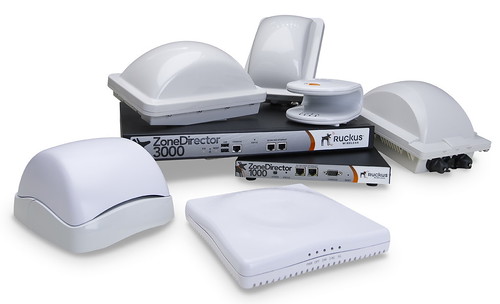 We live in a technology-driven world these days and it is affecting how we do almost everything.
We live in a technology-driven world these days and it is affecting how we do almost everything.
Satellite technology, the personal computer, the Internet, mobile devices and more have all led to the digitization of our content and have established a need for immediate access to information. We are convinced that it is more important than ever to have the right backbone installed in your home so everything talks the same language and works together effortlessly.
Most consumers, when creating a home network, will purchase simple routers and related solutions that are found in mainstream distribution outlets. These simple routers and switches are not designed to handle the workload they are asked to carry because they were primarily developed as inexpensive single-room solutions.
What does this mean? It means that if you are building a new home or remodeling your old one, you would be wise to consider building a high-performance network. The following article will try to clear up any confusion you might have when it comes to establishing a personal network in your home.
What is a Network?
A network is a platform consisting of two or more computers that are linked in order to share resources (such as printers and drives), exchange files or allow electronic communications. The computers on a network may be linked through cables, telephone lines, radio waves or satellites. Computers residing on this network can be servers, desktops, laptops, mobile devices and other types of workstations.
The two basic types of networks are:
- Local Area Network (LAN)
- Wide Area Network (WAN)
A Local Area Network (LAN) is a network that is confined to a relatively small area. A Wide Area Network or WAN is used for a large geographic area such as the world. The LAN type of network is most often used in residential environments. In a typical LAN configuration, one computer is designated as the file server. It stores all of the software that controls the network, as well as the software that can be shared by the computers attached to the network.
Computers connected to the file server are called workstations. On many LANs, cables are used to connect the network interface cards in each computer; other LANs may be wireless. All wireless technologies require a transmitter and receiver system in order to communicate.
Remember that installing a good hardwire infrastructure in your home during construction will always improve the strength, reliability and overall performance of your network, but if that is not possible, wireless, if done right, can be a good option.
Residential Networks
Residential or LAN networks are generated through a subscription service; for example, Comcast, AT&T or Verizon FIOS all provide data networks. These services will bring the World Wide Web into your home on a cable or telephone wire. Using a modem, you can decode that signal for use in a computer, laptop or mobile device.
There are other types of networks for bringing information into the home. Cell networks and the more affordable femtocell networks are becoming popular in larger homes, where too many access points would be required. These types of networks use cellular frequencies as communication paths.
A router will take a single source of data that has been received by a modem and distribute that data to multiple streams or devices. Routers can also wirelessly transmit that signal over a pre-specified distance utilizing a transmitter. To answer the modern-day demands of a home network, we need a reliable and seamless network. One access point simply will not do. If the home is 2,000 square feet, one WAP (wireless access point) may cover the space; however, in larger homes or when more than one WAP is required, there are significant issues to contend with: unreliable roaming, multiple network SSIDs, radio strength issues, conflicts with neighboring networks, port failure, just to mention a few. With consumer networking products, many assume it is set-it-and-forget-it, but consumer products are not made to handle the constantly increasing workload that they are asked to carry.
In order to properly configure a network, we must first incorporate enterprise-grade wireless access points (WAPs), not off-the-shelf solutions. They should be strategically placed around the property to ensure seamless coverage. This collection of WAPs should be centrally managed by a wireless controller, which automatically analyzes, manages and optimizes the wireless environment in its entirety. When properly programmed and deployed, the wireless controller creates a robust, reliable and self-adjusting wireless environment.
This controller-based wireless network is perfectly suited for the IP-enabled automation systems, computers, AV equipment and other devices that are all working simultaneously via the homes wireless network. Additionally, they will offer the stable platform necessary to deliver exceptional system performance.
Additional Networking Terminology:
Protocol

